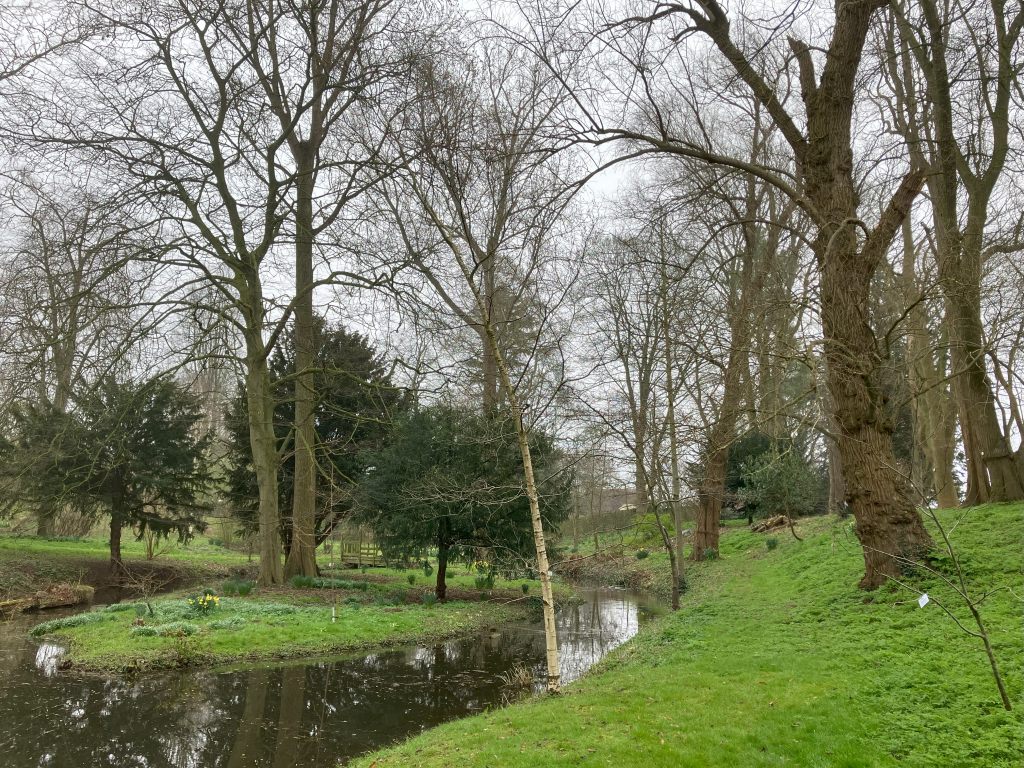#354 (C13) PAPER BIRCH
Betula papyrifera

Planted: 1997
This tree is planted on the edge of the moat at the western end of the Moat Path
| Other Common Names: | (American) White Birch and Canoe Birch |
| Distribution: | Native to northern North America, mostly confined to Canada and the northern United States. |
| Planting Date: | December 1995 |
| Bought from: | Blakedown Nurseries, Kidderminster |
| Appearance: | A medium-sized deciduous tree. Within forests, it often grows with a single trunk but when grown as a landscape tree it may develop multiple trunks or branches close to the ground. |
| Growth Habit: | A short-lived species. It handles heat and humidity poorly and may live only 30 years, while trees in colder-climate regions can grow for more than 100 years. |
| Bark: | Paper birch is named after the tree’s thin white bark, which often peels in paper-like layers from the trunk. In older trees, the bark is white, commonly brightly so, flaking in fine horizontal strips to reveal a pinkish or salmon-coloured inner bark. It often has small black marks and scars. In individuals younger than five years, the bark appears a brown, red colourwith white lenticels, making the tree much harder to distinguish from other birches. The bark is highly weather-resistant. It has a high oil content and this gives it its waterproof and weather-resistant characteristics. Often, the wood of a downed paper birch will rot away, leaving the hollow bark intact. The stems are a reddish-brown colour and may be somewhat hairy when young. |
| Leaf: | The leaf buds are conical and small, green with brown edges. The leaves are dark green and smooth on the upper surface; the lower surface is often pubescent on the veins. They are alternately arranged on the stem, oval to triangular 4 to 10 cm long and about two-thirds as wide. The leaf is rounded at the base and tapering to an acutely pointed tip. The leaves have a doubly serrated margin with relatively sharp teeth. Each leaf has a petiole of about 2.5 cm long that connects it to the stem. Autumn colour is a bright yellow. |
| Flowers: | Paper birch is monoecious, meaning that one plant has both male and female flowers. The female catkins are greenish and 3.8 cm long growing from the tips of twigs. The male catkins are 5 to 10 cm long and a brownish colour. Flowers from mid-April to June and wind pollinated. |
| Fruit: | Fruit is produced irregularly on mature trees and starts to drop in September. Composed of numerous tiny winged seeds packed between the catkin bracts. |
| Roots: | Generally shallow and occupying the upper 60 cm of the soil and do not form taproots. High winds are more likely to break the trunk than to uproot the tree. |
| Ultimate Size: | Typically reaching 20 m tall, and exceptionally to 40 m with a trunk up to 75 cm in diameter |
| Uses: | Primary commercial uses for paper birch wood are in construction, while secondary products include firewood and paper. |
| Plant Hunter: | Not known |
| Introduction Date: | 1750 |
| Anecdotes and Comments: | The indigenous people of north America used the water-resistant bark to line their canoes and make waterproof wrappings, torches, baskets, paper and roof linings. The young leaves, shoots and catkins are all edible. The sap can be used to make syrup, wine and vinegar. The timber is used for shoe lasts, veneers and plywood. Paper birch is often one of the first species to colonise a burned area, and is an important species for moose browsing, in North America. |